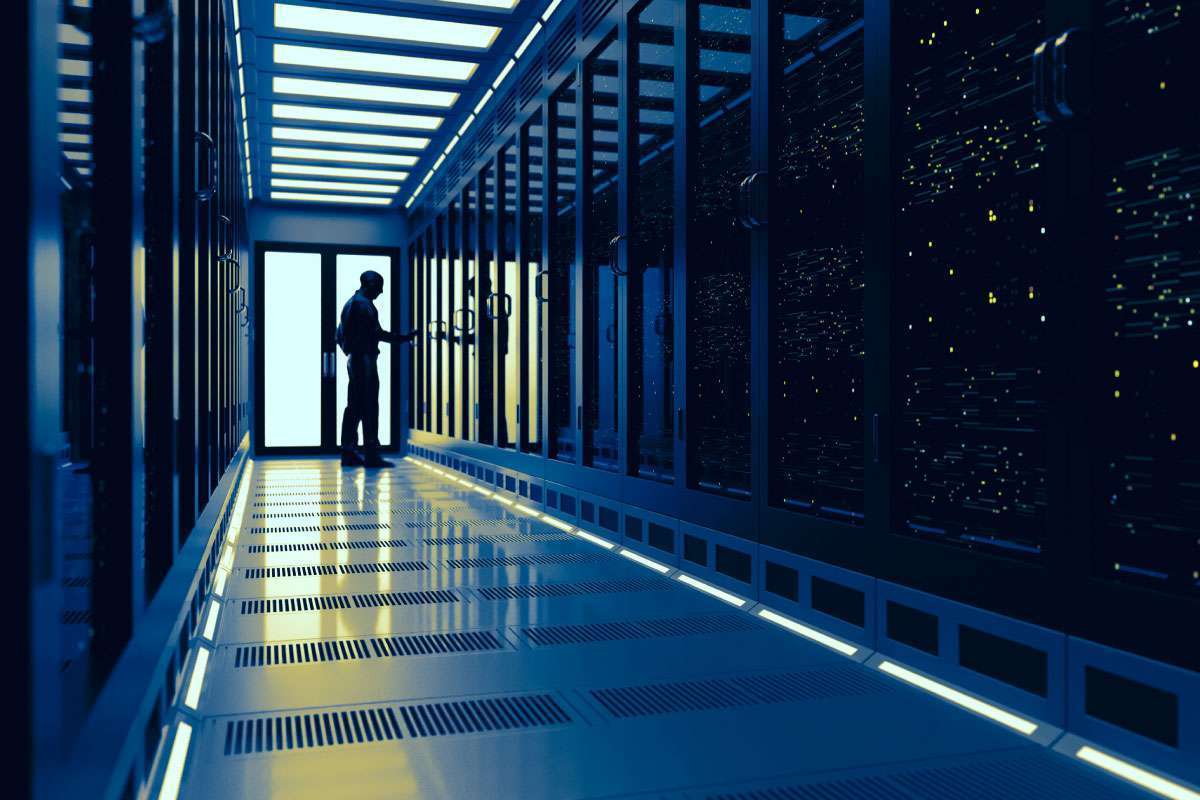
Data centers. The once-niche piece of IT infrastructure is now the talk of the investment world. Nvidia, the supplier of parts for modern cloud storage and processing data centers, is now the biggest company in the world, surpassing Apple. Data centers have also quickly become one of the hottest investments in the real estate space. A recent CBRE Global Data Center Survey revealed that 97 percent of investors plan to allocate more funding toward data centers this year, up from 89 percent in 2023. CBRE itself sees so much potential in the sector that have decided to buy a data center service provider from a private equity firm
Like warehouses and logistics in the pandemic era, the sky’s the limit for data center development. Last year, the Total North American data center transaction volume was $4.8 billion, a 29 percent increase from the previous year. Large institutional investors have a growing appetite for data centers. Private equity giants like Brookfield, Blackstone, and Starwood Capital recently announced multibillion-dollar data center investments. Logistics firm Prologis launched a dedicated data center arm that could make it one of the most prominent players in the sector.
While data center investment is growing quickly, so are the energy requirements for newer facilities. The immense amounts of power needed for data centers for Big Tech firms like Microsoft, Google, Meta, and Amazon Web Services are testing the limits of energy grids. Hyperscale data centers have grown over the past several years from dozens of megawatts to hundreds, and some tech firms are looking for sites to power more than a gigawatt of capacity. To put that into perspective, one gigawatt is sufficient to provide a full year of energy to about 900,000 households, about the size of a major U.S. city.
Driven by the need to power new AI technologies, developing these mega-data center campuses is leading to creative approaches for tech firms to acquire power and closer collaboration between the data center industry and energy companies to ensure the grid holds up. There have yet to be any announcements for gigawatt-scale data centers. Still, requests for proposals submitted by Big Tech firms to developers and requests for connections to the energy grid reported by utilities show they will be coming soon.
Three hyperscale data centers have issued RFPs in just the Atlanta market, with one company looking for four gigawatts of capacity. Microsoft and OpenAI are reportedly planning the biggest of the data center mega-campus. The provocatively named ‘Stargate’ supercomputer campus is a $115 billion project, one of the most expensive data centers proposed thus far, costing about 100 times more than some of the largest existing data centers. It could take up to two years to build, and it will have tremendous power needs of up to five gigawatts.
The U.S. used 19 gigawatts to power data centers in 2023, and it’s expected to grow to 25 gigawatts by 2026, comprising about six percent of the country’s power. Due to power shortages, massive projects like Stargate often seek their own alternative power sources like nuclear energy. Amazon recently acquired a 1,200-acre data center campus in rural Pennsylvania that a 2.5-gigawatt nuclear power plant will power. Where these massive new data centers get their power is a critical consideration. The power needs are also changing how new data center developments are designed.
While the energy needs grow, many large tech firms are also pledging to reduce carbon emissions and improve energy efficiency. Data centers are becoming denser, consuming more watts per square foot and emitting more heat. The amount of servers per location is increasing, so the ability to control temperatures has become more urgent. All these factors are leading to innovations in data center design and construction.
Cooling systems are one of the most important components of a data center. More data center owners are considering advanced cooling systems, such as liquid cooling, to improve efficiency and reduce energy usage. Liquid cooling systems also improve reliability, minimizing the risks of equipment failure from overheating. Meta is restructuring its data centers for high-performance computing, and it’s accelerating the implementation of liquid cooling. Another example is IBM and Schneider, who are experimenting with rear-door, self-contained water cooling units. In Norway, some businesses even use cold seawater or glacier water to cool data center facilities.
On the construction side, supply chain issues are still causing long equipment lead times. The lack of available land, permitting challenges, and pushback from communities to new developments are also hampering the construction of new facilities. Developers have turned to prefabrication construction methods. Prefabricated modular design has cut construction times, reduced costs, and improved sustainability for many data center developers. One company reported lowering the cost of building a 45-megawatt European facility by 20 percent and slashing construction time to 11 months from 17 months by using prefab building components and modular components for electrical and cooling systems.
Close proximity power generation is another growing need for hyperscale data centers. As the Amazon example alluded to, nuclear power has become seen as a sustainable energy alternative for some developments because, once built, it produces virtually no emissions. Using nuclear power for large data centers is still in the early stages. Companies are optimistic about the possibility of small nuclear reactors that are factory-built and modular. These reactors are much smaller than legacy nuclear power plants. They can be more safely used close to population centers because many have safety systems requiring no human intervention for a shutdown. This effectively eliminates the risk of a radioactive event.
Even without AI, the level of data creation is hard to grasp. Globally, about 200 million emails are sent every minute, and more than 100,000 hours are spent on Zoom calls every minute. That’s only a small percentage of the amount of data created online per day. This enormous level of online activity requires a significant amount of infrastructure, and data centers are the physical backbone of the Internet.
Data centers are also one of the most attractive real estate investments at a time when core sectors are struggling to tread water. However, these facilities are notorious energy hogs, consuming up to 50 times more power than the typical commercial building. If the data center boom is to continue, innovations must be made in how they’re designed and built. This is already happening. The massive data centers of the future will bring innovations that make our increasingly online lives possible. In the process, they will also likely make a ton of money for real estate investors who are flocking to the sector.





